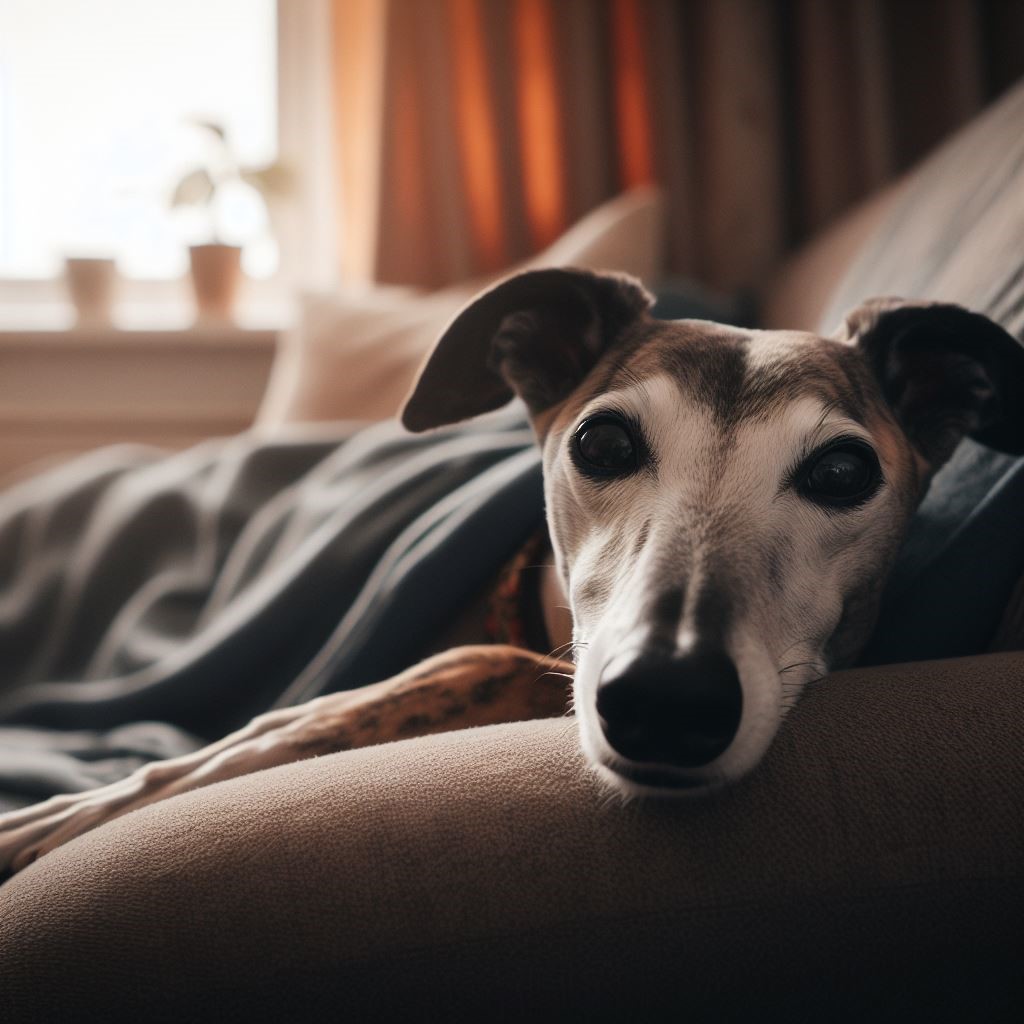Retired greyhounds, which have previously competed on registered tracks, possess an extensive background of pedigree information and racing history. This history is identifiable through the dog’s unique racing name as well as ear tattoos and can be accessed through specific databases, providing insights into the dog’s lineage, racing achievements, and past life experiences.
Greyhound Identification: Unique Features and Implants
In contemporary times, greyhounds in the United Kingdom possess two distinct identifiers regulated by the Greyhound Board of Great Britain (GBGB):
- Grand racing name: The official name under which the dog has raced throughout its career.
- Implants: Each greyhound is implanted with a unique identification microchip, superseding the traditional ear tattoos, consistent with GBGB guidelines. These implants serve as conclusive identifiers for each racing greyhound.
The tattoos serve as an identification code and can be read by standing beside the dog and bending the ear back towards oneself. Care should be taken when reading tattoos as they can appear reversed and upside-down if viewed from the front of the dog. For instance, the tattoo ‘HN1’ might appear as ‘INH’. To ensure accuracy, the right-hand ear tattoo should be entered in the right box and the left-hand one in the left box of the research database. If the tattoos are indistinct, light can be shined through the back of the ear for clearer visibility.
Utilizing the Greyhound Database
The Greyhound Racing and Breeding Database (www.greyhound-data.com) is a resource for identifying and understanding a retired racing greyhound’s pedigree and racing history. The information can be accessed using either the ‘Dog Search’ or ‘Tattoo’ options.
Pedigree Information
Once the greyhound’s identifiers have been inputted, the pedigree information will appear, tracing back the lineage up to five generations. This pedigree chart reveals the dog’s aristocratic heritage, alongside a reference to a blood quota indicating ancestors that appear more than once in the pedigree. There is also a breakdown of the racing achievements of other dogs that share the same dam (mother), who may be siblings or half-siblings of your dog.
Racing History
Following the pedigree chart, a detailed report of the dog’s racing history can be accessed by clicking the ‘Races’ button at the top of the page. A numerical value, for example, ’55 races’, may be displayed, indicating the total number of races in which the greyhound has participated.
By unravelling the rich tapestry of a retired greyhound’s past, it is possible to gain insights into the dog’s notable achievements and struggles during its racing career. Questions such as the following can be answered:
- Was the greyhound a top performer or an average racer?
- Did it have any falls or injuries during its racing career?
- Was it skilled as a sprinter or a marathon runner?
- Was it successful at winning races despite being in a crowded field?
- When and why did the greyhound retire from racing?
- Finally, did it outperform its parents or siblings on the racetrack?
This detective-like exploration provides a deeper understanding of the retired greyhound, making the bond between dog and owner even more special.
Researching Greyhound Bloodlines
When examining a retired greyhound’s pedigree, it may be useful to dig deeper into their bloodlines, the family trees of racing dogs, in order to better understand the genealogy and performance trends. Familiarizing oneself with renowned greyhound bloodlines and their well-regarded sires/broods can provide more context on the dog’s inherent capabilities and potential breeding options.
Common Bloodlines in Greyhound Racing
Several notable bloodlines have consistently produced strong-ranging greyhounds, demonstrating impressive racing abilities.
Some of these renowned bloodlines include:
- Molotov
- Downing
- Unruly
- Fortress
- Wigwam Wag
Sires and Broods: Significance and Selection
When examining the pedigree information, particular attention should be given to the sires (fathers) and broods (mothers) of the greyhound. These bloodline contributors have a significant genetic impact on the racing performance and traits of their offspring.
Consider the following when evaluating sire and brood contributions:
- Racing performance: What were the racing achievements of the sire and brood? Top-performing parents often produce offspring with similar racing abilities.
- Consistency of breeding: How often does a specific sire or brood appear in pedigrees of successful racing greyhounds? Repeated appearances suggest a strong genetic contribution to racing prowess.
- Compatibility: What are the strengths and weaknesses within a sire’s or brood’s performance? Choosing a compatible pairing can help to balance out any shortcomings and improve overall performance potential.
Greyhound Traits
Understanding the various physical and behavioral traits of racing greyhounds is essential in assessing the potential of a retired greyhound and its pedigree.
Physical Traits
Greyhounds display numerous physical attributes that contribute to their racing ability. By analyzing these traits, one can potentially infer the greyhound’s racing style and performance.
Some key physical traits to consider include:
- Size and build: Greyhounds with larger or more muscular builds tend to exhibit greater power, potentially providing an advantage in shorter races.
- Leg length: Longer legs are generally associated with higher top speeds, while shorter legs might indicate a faster start and acceleration.
- Coat color: While coat color does not directly impact racing performance, certain colors often run in certain bloodlines, allowing for easier identification of lineage.
Behavioral Traits
In addition to physical traits, racing greyhounds exhibit various behaviors that can provide insights into their racing capabilities and effectiveness on the track.
Some important behavioural traits to observe include:
- Temperament: Is your greyhound docile or aggressive? Aggressive dogs may find it easier to navigate crowded racing environments.
- Focus: Does your greyhound have a strong focus and intent on chasing the lure? A high degree of focus typically translates to better racing performance.
- Socialization: How well does the greyhound interact with other dogs and humans? Adaptability and comfort around others may suggest a smoother racing career and transition into retirement.
By exploring these subtopics, a more comprehensive understanding of a retired greyhound’s racing history and pedigree can be attained. This in-depth knowledge, combined with an informed appreciation of their bloodline, genetics, and unique traits, helps to contextualize a greyhound’s racing career and enhance the bond between owner and dog.




